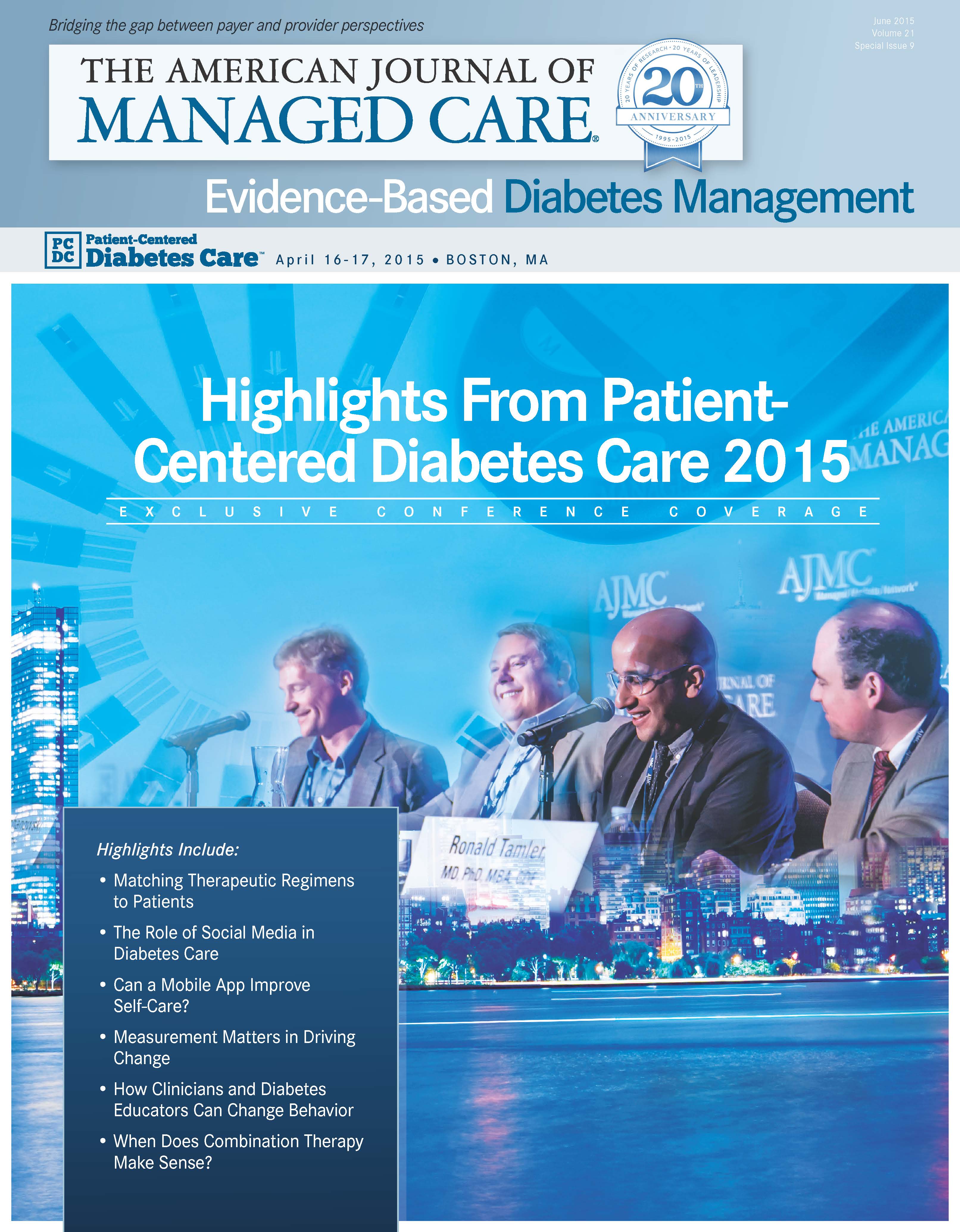- Center on Health Equity & Access
- Clinical
- Health Care Cost
- Health Care Delivery
- Insurance
- Policy
- Technology
- Value-Based Care
Lifestyle Change Works, but Getting There Frustrates Both Doctors and Patients
Lifestyle change can produce dramatic results in health outcomes, but motivating patients can prove very difficult, panelists at the session during Patient Centered Diabetes Care agreed.
Persons with diabetes who lose weight, exercise, and stop smoking have dramatically better health outcomes than those who do not, but doctors often get frustrated trying to motivate patients to make lifestyle changes.
That was the consensus of the panelists in a roundtable titled “The Role of Clinicians and Educators in Lifestyle Management,” part of the April 17, 2015, Patient-Centered Diabetes Care symposium presented by The American Journal of Managed Care and Joslin Diabetes Center.
Moderator Osama Hamdy, MD, PhD, FACE, related that when the Joslin launched its “Why WAIT?” program, it found that as patients “start to lose weight, insulin sensitivity improved by 57%” and risk of “coronary artery disease as measured by endothelial function improved by around 80%.” Those dramatic health improvements drove down costs of care 27% overall. “Diabetes elevated cost is down by 44%,” Hamdy said. “We will spend $561 less on medications [per patient] in a year.”
The director of the clinical and education programs at Joslin Diabetes Center, Melinda Maryniuk, MEd, RD, CDE, said there is growing emphasis on training associate diabetes educators, who could be community health workers, peer counselors, or of ce personnel in a physician’s of ce, to educate patients about their disease and encourage them to make bene cial lifestyle changes.
Empathy is important, Maryniuk said. “The first step is just to acknowledge that having diabetes or chronic disease is hard,” she said. “Just living with all of the things there are to do with diabetes can be really dif ficult. The fi rst step, instead of trying to go change the behavior, which is certainly ultimately important, is listen to their story about why it’s hard—and understand what their fear is or what their challenge is.”
Andrew Pumerantz, DO, founder and director of the Western Diabetes Institute and creator of the Diabetes Cross-Disciplinary Index (DXDI) at Western University, treats a “base of the pyramid” patient population in low-income Pomona, California. The DXDI was developed “as an at-a-glance view for every patient” that is understandable and meaningful to “all the stakeholders,” including health plans, the patient, and specialists who often fail to communicate.
“There was an awful lot of fragmentation of care across the healthcare ecosystem for each individual patient,” Pumerantz said. Pumerantz resolved the fragmentation by developing the Western Diabetes Institute as an “integrated practice unit” to address “the multi-morbidity that people living with diabetes, predominantly type 2, have to face.”
A patient referred by their primary care provider receives “a full same-day evaluation,” he added. “They haven’t had an eye exam. They haven’t had a foot exam. They haven’t even seen the dentist in years. We’re starting to tie all that in, put the mouth back in the body, and then share that with the patient and their caregiver and their family,” he said.
Edward Phillips, MD, founder and director of the Institute of Lifestyle Medicine, said medical education overlooks the lifestyle factors in chronic disease. “We know what’s putting us in the grave too early. We know what’s making us disabled and diseased, and yet we don’t teach that to healthcare professionals,” he said. The mission of the Institute of Lifestyle Medicine is to “change the culture of the education system for all healthcare professionals worldwide at all levels.”
There is no better way for a doctor to educate a patient than by example, Phillips believes. He described lifestyle medicine as “an evidence-based practice of assisting families and individuals to adopt and sustain healthier behaviors to improve the quality of life.” Both the physician and the entire medical of fice staff can help patients by themselves adopting healthier practices. “One of the most powerful things is a doctor or nurse who’s transformed himself or herself. Patients certainly notice when the receptionist drops 50 pounds because the of ce and the culture of health has been changed,” Phillips said.
Albert Tzeel, MD, MHSA, FACPE, regional medical director of Senior Products for Humana in North Florida, said the insurer has set a goal “to improve the health of the communities we serve [by] 20% by 2020.” The insurer is working with physicians by examining “a treasure trove of claims data” to determine “who needs what, who hasn’t gotten their eye exam, who hasn’t gotten their lab work, who’s not being adherent to their medications, whatever situations are there, so that we can complement the education that’s needed for our members.”
Humana is trying “to bring best practices” to doctors in its network. By examining claims data, Humana can alert doctors to “who potentially could run into various medical issues, especially those folks with diabetes, who may show up in the [emergency department] with a heart attack or issues relating to adherence or some of the other gaps in care.”

Managed Care Reflections: A Q&A With Laurie C. Zephyrin, MD, MPH, MBA
November 12th 2025To mark the 30th anniversary of The American Journal of Managed Care, each issue in 2025 includes a special feature: reflections from a thought leader on what has changed—and what has not—over the past 3 decades and what’s next for managed care. The November issue features a conversation with Laurie C. Zephyrin, MD, MPH, MBA, senior vice president for achieving equitable outcomes at the Commonwealth Fund. This interview has been edited for length and clarity.
Read More

